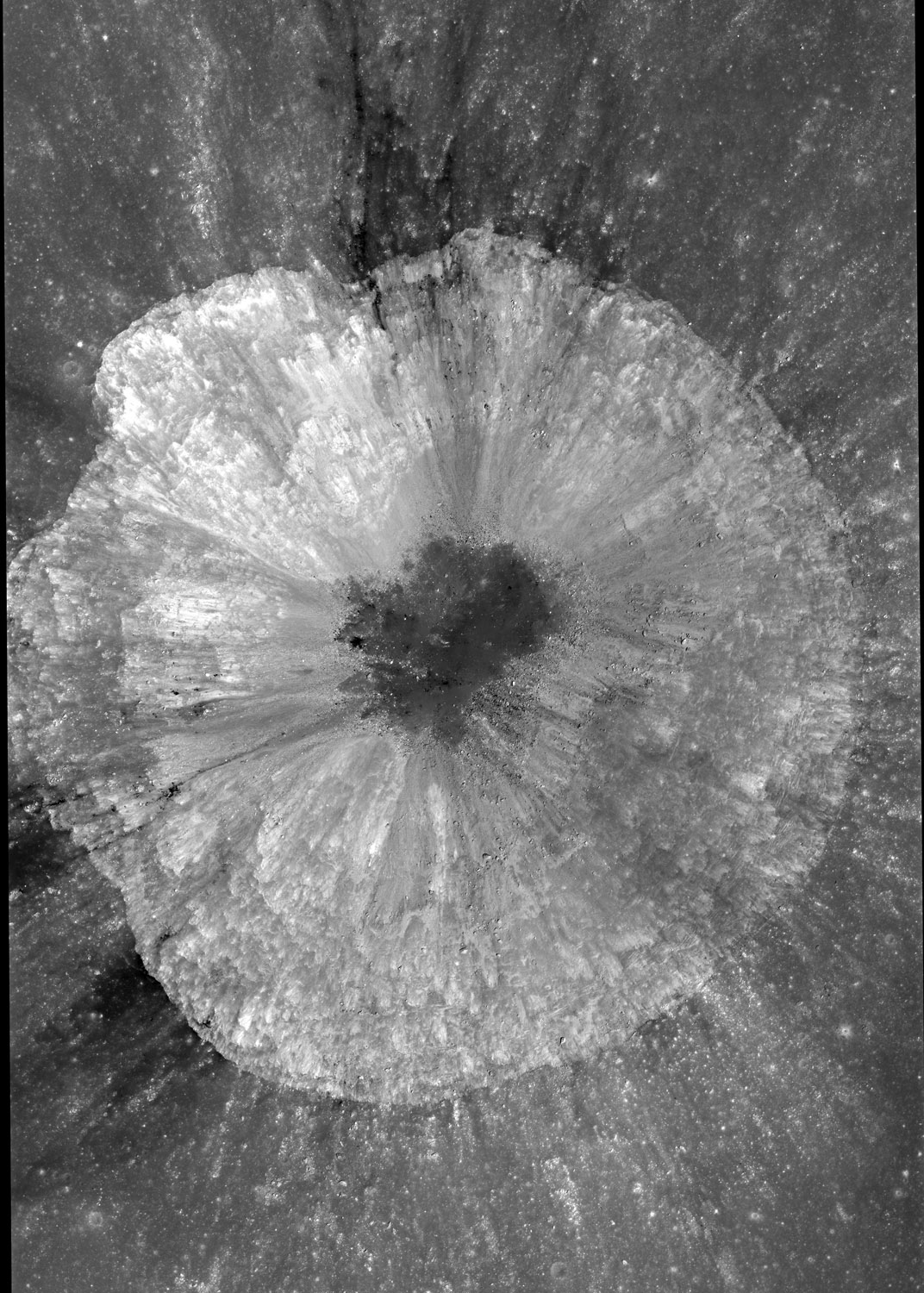Difference between revisions of "May 18, 2010"
| Line 13: | Line 13: | ||
<br /> | <br /> | ||
<hr /> | <hr /> | ||
| − | < | + | <p><b>Yesterday's LPOD:</b> [[May 17, 2010|Show Me the Moon]] </p> |
| − | < | + | <p><b>Tomorrow's LPOD:</b> [[May 19, 2010|Eskimo Moon]] </p> |
| − | + | {{wiki/ArticleFooter}} | |
| − | |||
| − | |||
Revision as of 10:23, 7 February 2015
Lunar Poppy

narrow angle camera LRO image from LROC Featured Image [NASA/GSFC/Arizona State University]
This farside crater is so fresh we almost ought to check previous images to make sure it hadn't formed in the last few weeks. It is five km across and a classic simple crater. But we are used to seeing even fresh simple craters with enough downslope movement of debris to cover the boulders that resulted from shattering of rocks by the impact. The dark material on the floor and draping parts of the rim is impact melt glass, ejected at the end of the crater formation. I looked on the half meter full res image and didn't notice any more recent impact craters. And Clementine shows why the impact melt is just on one half of the rim - it was an oblique impact.
Chuck Wood
Technical Details
The crater is at 8.0°N, 182.2°E
Yesterday's LPOD: Show Me the Moon
Tomorrow's LPOD: Eskimo Moon
COMMENTS?
Register, Log in, and join in the comments.



